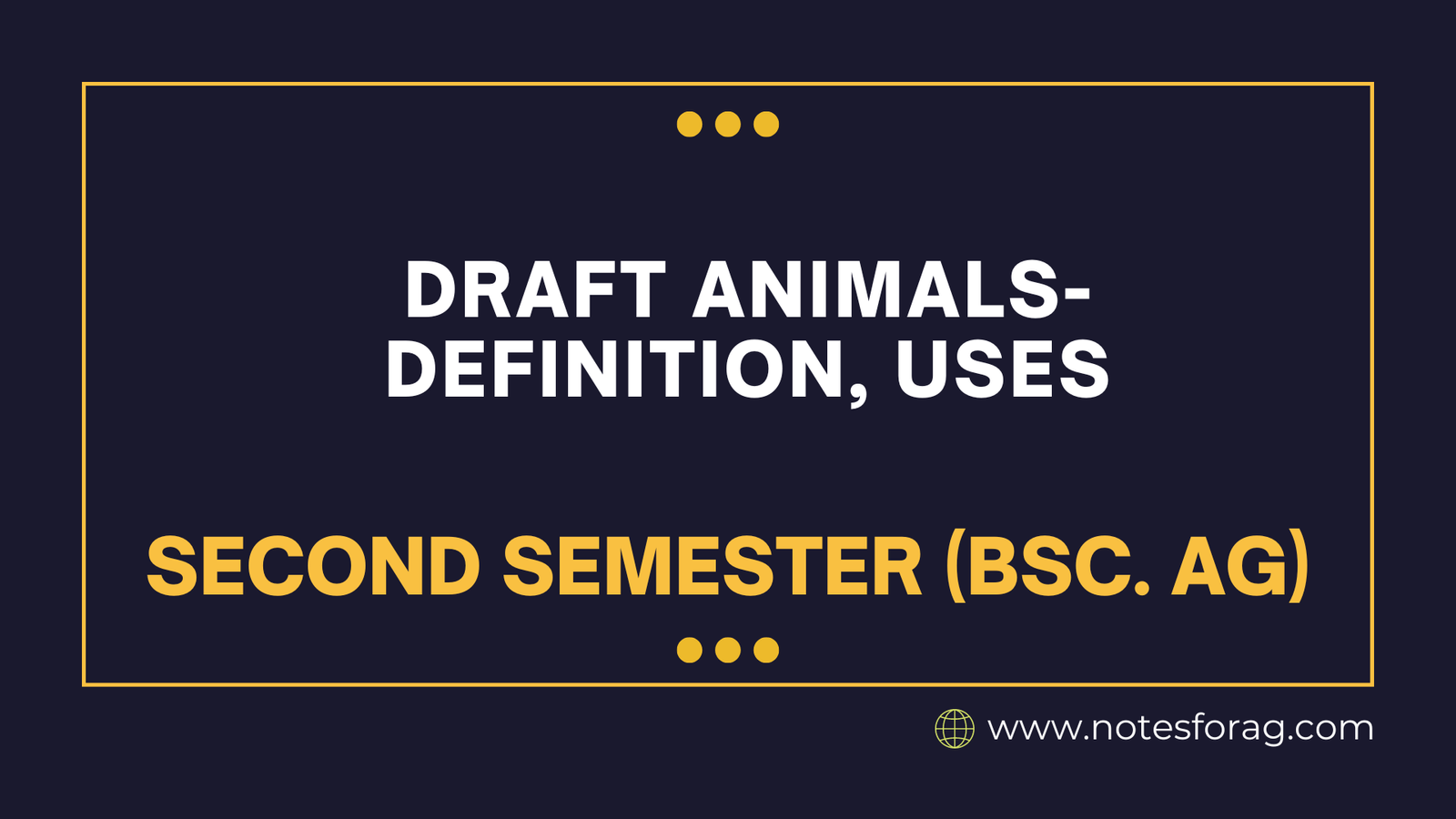Draft animals, including horses, donkeys, mules, and oxen, are essential to many industries, particularly those in construction, transportation, and agriculture. These animals are used in harness to do heavy lifting, move products and goods, and plough fields. In underserved and rural areas where mechanized equipment would not be practical or cheap, they are very helpful. Draft animals are essential in many traditional and contemporary societies throughout the world because they also support sustainable farming methods and have a less environmental effect than machines.
Table of Contents
Introduction to Draft Animals

Draught animals, or draft animals, are domesticated animals employed for labor, especially heavy lifting. These animals have played a crucial role in agriculture, transportation, building, and other aspects of human society for ages. Oxen, horses, mules, donkeys, and buffalo are common draft animals.
They provide a variety of functions in industry, transportation, and agriculture, and have long been an essential component of human society. The oxen, horses, mules, and donkeys in this group are specially trained and used for their prowess in carrying big loads, hauling carts, and plowing fields. Since ancient times, people have used they for labor-intensive tasks including daily labor and commerce due to their durability and strength.
As early agrarian communities developed, they became increasingly important historically. These animals were greatly used by the ancient Egyptians, Mesopotamians, and Greeks and Romans to move things and cultivate land, which in turn promoted trade and urbanization. Even as technology started to improve, they remained essential throughout the Middle Ages and the Industrial Revolution. They continue to be important in many developing and rural areas today, where automated alternatives could be more expensive or less accessible.
Primary Uses of Draft Animals
The primary uses of draft animals are presented below:
1. Agriculture
- Tilling and plowing: Draft animals help to aerate and break up the soil in preparation for crop planting by pulling tillers and plows.
- Harvesting and Sowing: They pull carts or wagons to move harvested crops, as well as seed drills for planting.
- Threshing: A historic process that’s still used in many places, animals crush harvested grains to separate the edible pieces from the chaff.
2. Transportation
- Carts and Wagons: Especially in rural and isolated places, draft animals drive carts and wagons filled with merchandise, agricultural products, building supplies, and occasionally people.
- Pack Animals: Camels, mules, and donkeys are able to carry cargo on their backs and are handy in rocky areas that are inaccessible to automobiles.
- Public transit: In certain places, rickshaws and horse-drawn carriages are used for public transit.
3. Construction
- Hauling Materials: They deliver bulky building supplies to construction sites, such as bricks, stones, and wood.
- Earthmoving: To move machinery for jobs like leveling terrain or excavating irrigation canals, they are utilized.
4. Forestry
- Logging: In densely forested places where equipment is impracticable, they transport logs from forests to processing centers.
5. Military and Emergency Services
- Supply Transport: Historically, and sometimes even now, they are used to carry supplies and military hardware.
- Rescue Operations: They may transport rescue goods to regions that are unreachable by automobile in disaster-affected areas.
6. Tourism and Recreation
- Carriage rides: Tourists may enjoy picturesque journeys in towns and historic locations aboard horse-drawn carriages.
- Equestrian Activities: Horses are utilized for riding and sleigh pulling, among other leisure activities.
7. Cultural and Ceremonial Uses
- Parades & Festivals:
- hey take part in parades, festivals, and cultural events to display their heritage and customs.
- Religious Ceremony: They are a sign of tenacity and power in certain cultures and are used in religious ceremonies.
8. Environmental Benefits
- Sustainable Farming: By lowering dependency on fossil fuels, they support sustainable farming methods.
- Low Impact: Compared to machines, they produce fewer carbon emissions and less compaction of the soil.
In many regions of the world, they are nevertheless relevant despite these difficulties. In some agricultural situations, their versatility and multifarious contributions render them vital. It is crucial to strike a balance between the advantages of modernity and the preservation of sustainable and culturally relevant activities as we move to the future. We can guarantee that draft animals continue to play a crucial role in our agricultural environment, promoting both economic resilience and cultural legacy, by combining contemporary technologies with ancient practices.
Frequently Asked Question(FAQ)
What are draft animals?
Domesticated animals called draft animals are employed to carry out labor-intensive activities like dragging and lugging heavy objects. Oxen, horses, mules, donkeys, and buffalo are common draft animals.
How do draft animals benefit agriculture?
They are necessary for carrying agricultural materials, sowing seeds, harvesting crops, tilling soil, and plowing fields. They provide better soil fertility, less labor-intensive farming operations, and soil preparation.
Related Articles

